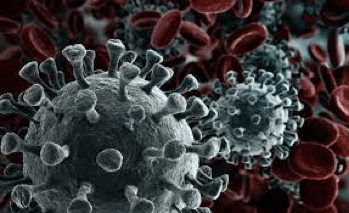March 12th, 2020

On Wednesday, March 11, 2020, the World Health Organization officially declared COVID-19 outbreak a pandemic. The viral disease has already swept into at least 114 countries and killed more than 4,000 people.
Many national and international conferences have been cancelled. Concerts and other events that draw large number of people have been cancelled and/or postponed. Schools and colleges are cancelling in-person classes and switching to on-line instruction. Here at ACEI, we are monitoring the developments very closely and cancelled our attendance at upcoming professional education conferences. We have a robust system in place to accommodate our team to work remotely and receive applications for credential evaluation online and via digital portals.
While we are in a wait and see state, we would like to share the link to Worldometer, an online site that provides live, up-to-date information. Worldometer, for those who may not be familiar, is run by an international team of developers, researchers, and volunteers with the goal of making world statistics available in a thought-provoking and time relevant format to a wide audience around the world. Worldometer is owned by Dadax, an independent company. They have no political, governmental, or corporate affiliation. Worldometer was voted as one of the best free reference websites by the American Library Association (ALA), the oldest and largest library association in the world. They have licensed their counters at the United Nations Conference on Sustainable Development (Rio+20), to BBC News, among others. Worldometer is cited as a source in over 10,000 published books, in more than 6,000 professional journal articles, and in over 1000 Wikipedia pages.
For real time updated, please visit Worldometer by clicking here and World Health Organization by clicking here.
The following is copied from Worldometer’s site:
Typical Symptoms
COVID-19 typically causes flu-like symptoms including a fever and cough.
In some patients – particularly the elderly and others with other chronic health conditions – these symptoms can develop into pneumonia, with chest tightness, chest pain, and shortness of breath.
It seems to start with a fever, followed by a dry cough.
After a week, it can lead to shortness of breath, with about 20% of patients requiring hospital treatment. Notably, the COVID-19 infection rarely seems to cause a runny nose, sneezing, or sore throat (these symptoms have been observed in only about 5% of patients). Sore throat, sneezing, and stuffy nose are most often signs of a cold.
80% of cases are mild
Based on all 72,314 cases of COVID-19 confirmed, suspected, and asymptomatic cases in China as of February 11, a paper by the Chinese CCDC released on February 17 and published in the Chinese Journal of Epidemiology has found that:
- 80.9% of infections are mild (with flu-like symptoms) and can recover at home.
- 13.8% are severe, developing severe diseases including pneumonia and shortness of breath.
- 4.7% as critical and can include: respiratory failure, septic shock, and multi-organ failure.
- In about 2% of reported cases the virus is fatal.
- Risk of death increases the older you are.
- Relatively few cases are seen among children.
Pre-existing conditions
Pre-existing illnesses that put patients at higher risk:
- cardiovascular disease
- diabetes
- chronic respiratory disease
- hypertension
That said, some otherwise healthy people do seem to develop a severe form of pneumonia after being infected by the virus. The reason for this is being investigated as we try to learn more about this new virus.
How long do symptoms last?
Using available preliminary data, the Report of the WHO-China Joint Mission published on Feb. 28 by WHO, [5] which is based on 55,924 laboratory confirmed cases, observed the following median time from symptoms onset to clinical recovery:
- mild cases: approximately 2 weeks
- severe or critical disease: 3 – 6 weeks
- time from onset to the development of severe disease (including hypoxia): 1 week
Among patients who have died, the time from symptom onset to outcome ranges from 2 – 8 weeks.
How to protect yourself?
World Health Organization offers advice on how we can protect ourselves. To learn more, click here.
https://www.youtube.com/watch?v=1APwq1df6Mw&feature=youtu.be
Sources
Symptoms of Novel Coronavirus (2019-nCoV) – United States Centers for Disease Control and Prevention (CDC)
Report of the WHO-China Joint Mission on Coronavirus Disease 2019 (COVID-19) [Pdf] – World Health Organization, Feb. 28, 2020
https://www.cdc.gov/– Center for Disease Control and Prevention
https://www.who.int/ – World Health Organization
https://www.worldometers.info/coronavirus/ – WorldoMeter Coronavirus
Be safe and be well.

The Academic Credentials Evaluation Institute, Inc. (ACEI), was founded in 1994 and is based in Los Angeles, CA, USA. ACEI provides a number of services that include evaluations of international academic credentials for U.S. educational equivalence, translation, verification, and professional training programs. ACEI is a Charter and Endorsed Member of the Association of International Credential Evaluators. For more information, visit www.acei-global.org.
